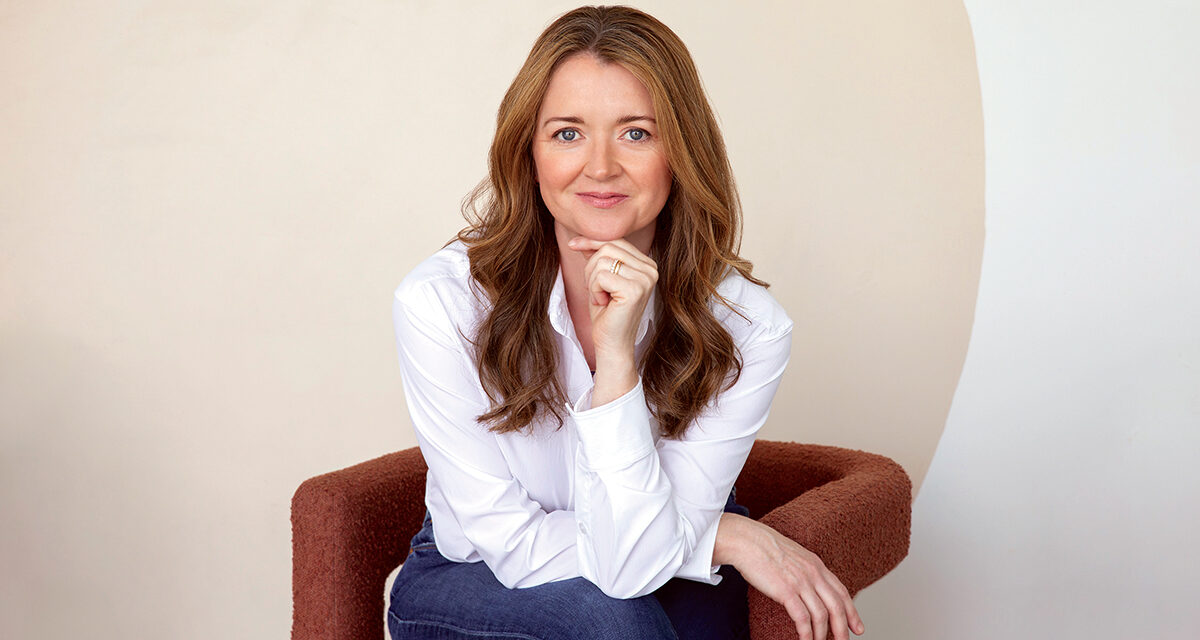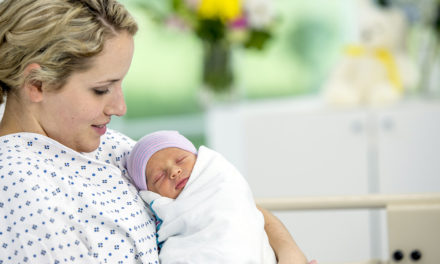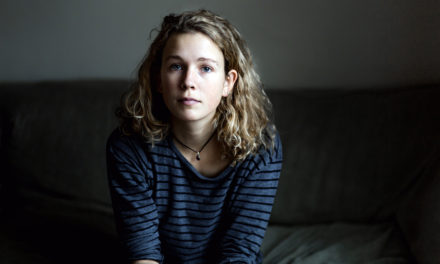For decades, journalist Meghan Rabbitt covered issues of women’s health for national magazines, so much so that it became central to her work and her life.
So when the legendary journalist and author Maria Shriver urged her to write a new and comprehensive manifesto on women’s health, Rabbitt vigorously took it on. During the three-year undertaking, she interviewed more than 130 women—all experts in their respective fields of women’s health—and wrote a hefty and wide-ranging 700-page book that touches on everything from puberty to menopause (and everything in between).
The New Rules of Women’s Health was not only a labor of love for Rabbitt but it was something she felt compelled to produce to help women fill in the holes in their understanding of their own bodies. Here, she shares the impetus for the book, what surprised her the most, how it impacted her own health, and even some of the behind-the-scenes of the creation process (including the good, the bad, and the ugly).
This book takes you on a journey through multiple life stages and health topics, and I wrote it with the idea that women would turn to a particular chapter when something comes up for them or a loved one and they want to know more.
Real Woman I feel like this book has been kicking around in your brain for a long time …
Meghan Rabbitt I have been working as a women’s health journalist for just over 20 years. About a year into working for Maria Shriver as an editor and writer for her weekly newsletter, The Sunday Paper, she asked me to write a book for her imprint at Penguin Random House. She said, “I want you to write a manifesto on women’s health.” We talked about how the book most of us turn to is Our Bodies, Ourselves—an amazing resource that generations of women have loved. But that book focuses on women’s reproductive and sexual health. Maria saw a need to look at women’s health through a broader lens.
“We need to talk about women’s brains and hearts,” Maria told me, “and report on sex-specific differences in things like the immune system and how we feel pain.” So I think this book was brewing inside me for many years, but it didn’t crystallize until Maria Shriver said, “I want a women’s health manifesto, and I want you to write it,” and that’s what I did.
RW Did you have a gut reaction to the word “manifesto?”
MR I am 100 percent the oldest sibling, go-getter, straight-A student. I think my initial response was, “OK, Maria Shriver, I’ll write a manifesto!” And sure enough, I wrote a 700-page book on women’s health.
The thing is, I didn’t set out to write a 700-page book. But the more I tucked into the research and my reporting, and as the book started coming together, it became clear that if we are going to take care of ourselves optimally and advocate for ourselves, we need the information to do that and the language to talk about all the things—not only with each other but with our health-care providers. It became a book that I’m hoping readers will think of like a guide. It takes you on a journey through multiple life stages and health topics, and I wrote it with the idea that women would turn to a particular chapter when something comes up for them or a loved one and they want to know more.
RW What parts fascinated, surprised, alarmed, or excited you the most when you were reporting this book?
MR I found myself surprised at the information I was learning at so many points in the reporting process. Let’s start with anatomy. Did you know we have a lot of different body parts that are named after men? Take Fallopian tubes, for example. They are named after a 16th-century Italian priest and anatomist named Gabriele Falloppio. There’s a new group of anatomists, largely female, who are pushing for us to stop using anatomical eponyms—terms named after the people, almost always men, who claimed to have discovered the body part—and to use anatomical toponyms instead, which are terms that describe where the anatomical structure is in the body. For example, the toponym is uterine tubes whereas the eponym is Fallopian tubes. Not only does using toponyms help us make progress from the old ways of medicine that left women out of the equation, but they’re also easier to remember. Research shows thst using toponyms decreases cognitive load in medical students.
There were many other surprises along the way. Most women don’t know that heart disease is their number-one health risk or that gynecologic issues like pregnancy complications and a history of hot flashes during the menopause transition puts us at an even bigger risk of heart disease. Some doctors aren’t accurately assessing our lifetime risk of breast cancer, and there’s a simple test (Tyrer-Cuzick Risk Assessment Calculator) that all of us can take to get that assessment and then bring the results to our doctors so we can have a better conversation about breast cancer screening.
RW What about this book left you feeling most hopeful?
MR The menopause chapter. We are starting to talk about this transition more openly, and there are a growing number of health-care practitioners who are speaking up about this major hormonal transition as well. There’s a group of clinicians who call themselves the “menoposse,” and they’re vocal on social media and trying to spread evidence-based information for women who are either in perimenopause
(or approaching it), in menopause, or after.
RW Did any topics leave you concerned?
MR The first thing that comes to mind is autoimmune disease. Autoimmune conditions disproportionately impact women, and we don’t really know why. There are a lot of theories, but we haven’t done enough research to have solid answers.
Another topic is pain. Women’s pain is still not taken seriously. And worse, we often don’t take our own pain seriously. We brag about having a high pain tolerance, but this has detrimental effects. When pain isn’t treated properly, you get more sensitive to pain over time. It’s called pain sensitization, or the windup theory of pain.
RW Did this book inspire any changes in your own life?
MR Absolutely. Take pain management, for example. I had a hysterectomy, and before working on that chapter on pain, I probably would have bragged about my high pain tolerance and resisted taking pain meds. Instead, I followed my surgeon’s pain management recommendations to a tee, and I think it made a big difference.
For years, I ignored my own symptoms. I blamed my debilitatingly heavy periods on one of the bummers of being born female. As my periods got heavier, I assumed it was perimenopause and chugged along. Finally, I had an open, honest conversation with my gynecologist, and she recommended I have a vaginal ultrasound. Sure enough, I had a uterus full of fibroids.
Still, I was resistant to the idea of surgery. I thought I could power my way through menopause with those fibroids and just deal with the anemia and monthly “hemorrhaging” as I bitterly called it. Working on this book really opened my eyes to the fact that I didn’t have to suffer. And it helped me have more informed conversations with multiple surgeons to get their expert opinions, which ultimately helped me land on a decision I felt was right for me.
RW What do you hope the impact of this book will be, not just on women but on men?
MR A few times when I was writing this book, I would give my husband a chapter to read. He found so much of the information revelatory and told me it started to become clear that it was going to help him support me when it comes to the health stuff I’ll inevitably face.
My hope is that if women have this book, they’ll be able to give it to their male partners and/or their sons and say something like, “Can you please read this chapter so we can talk about this topic, because you’re my person and I want you to come with me to this doctor’s appointment or support me in this way.”
RW Let’s talk about the beast of writing this book, which took you three years. Can you talk about your process?
MR I was on the struggle bus so often during the early days of working on this book. It was an overwhelming undertaking. I started comparing working on this book to climbing Mount Everest. But at a certain point, I realized that self-talk was making me feel even more overwhelmed. Words matter. How we talk to ourselves matters. I realized what would be more helpful and productive was just putting my head down and doing the work, step-by-step.
When I was on a roll, I’d take many steps forward—and then realize that an entire chunk of a chapter needed to be re-written or scrapped, and it felt like I was falling behind. It’s the nature of the beast. At first I’d beat myself up about it. But through this wild ride of writing this book, I learned that being gentle with myself was always more productive. It’s a practice, for sure, but it feels like a worthy one.
RW Did you have a moment with Maria after you finished this book she commissioned you to write?
MR I texted Maria when I had my “pencils down” moment and the completed, edited and fact-checked manuscript was handed over to production. I was at the summit of my favorite hike. I sort of laugh-cried my way up the trail that day feeling all the feels—proud, exhausted, relieved. I thanked Maria for the opportunity to write this book, and she sent me the nicest voice note. Maria is an amazing person to work for. She’s like a good mom. She pushes you to be your best, but along with the push comes a lot of support. She’s the kind of boss you want to make proud. And I think I’ve made her proud. I hope I have.
RW Well, you made me proud, that’s for sure.
MR Thanks, girl!







